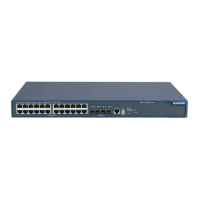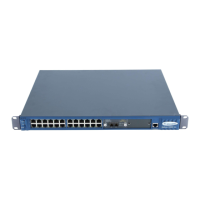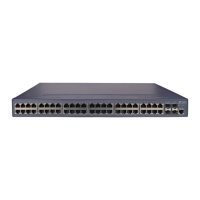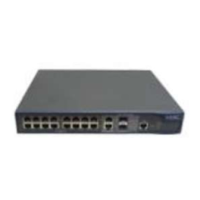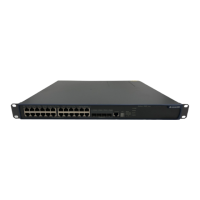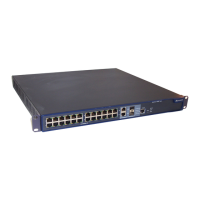Command Manual – SNMP and RMON
Quidway S3900 Series Ethernet Switches-Release 1510 Chapter 2 RMON Configuration Commands
Huawei Technologies Proprietary
2-10
With an alarm entry defined in an alarm group, a network device performs the following
operations accordingly:
z Sample the defined alarm variables (alarm-variable) once in each specified period,
which is specified by the sampling-time argument.
z Comparing the sampled value with the set threshold and performing the
corresponding operations, as described in
Table 2-7.
Table 2-7 Sample value and the corresponding operation
Comparison Operation
The sample value is larger than or equal to the
set upper threshold (threshold-value1)
Triggering the event identified by
the event-entry1 argument
The sample value is smaller than the set lower
threshold (threshold-value2)
Triggering the event identified by
the event-entry2 argument
Note:
z Before adding an alarm entry, you need to use the rmon event command to define
the events to be referenced by the alarm entry.
z Make sure the node to be monitored exists before executing the rmon alarm
command.
Example
# Add the alarm entry numbered 1 as follows:
z The node to be monitored: 1.3.6.1.2.1.16.1.1.1.4.1
z Sampling interval: 10 seconds
z Upper threshold: 50
z The event-entry1 argument identifies event 1.
z Lower threshold: 5
z The event-entry2 argument identifies event 2
z Owner: user1.
<Quidway> system-view
System View: return to User View with Ctrl+Z.
[Quidway] rmon event 1 log
[Quidway] rmon event 2 none
[Quidway]rmon alarm 1 1.3.6.1.2.1.16.1.1.1.4.1 10 absolute rising_threshold
50 1 falling_threshold 5 2 owner user1
# Delete the alarm entry numbered 15 from the alarm table.
[Quidway] undo rmon alarm 15

